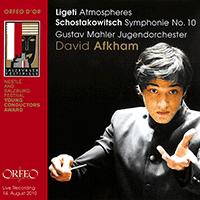
György Ligeti (1923 - 2006)
Of Hungarian-Jewish origin, Ligeti made his career in Hungary until 1956, when he escaped to Vienna. There he was influenced by contact with more experimental Western techniques of composition, notably through work at the electronic studios in Cologne. His music now achieved a wider international reputation, incorporating contemporary techniques and experiment in a musical idiom that has proved both influential and palatable.
Opera
Ligeti’s 1977 opera Le Grand Macabre, set in a land derived from the paintings of Breughel, is an allusive work, drawing on a variety of sources from Monteverdi to Beethoven and opening with a motor-horn prelude.
Orchestral Music
It was with compositions such as Apparitions in 1959 and Atmosphères in 1961, the latter a 48-part mirror canon, that Ligeti began to win a wider reputation. Other orchestral works that aroused interest included a Chamber Concerto for 13 instruments, the Cello Concerto and the Concerto for flute, oboe and strings. Lontano, written in 1967, has a place in contemporary repertoire, along with Ramifications for 12 strings and San Francisco Polyphony. He also wrote concertos for piano, for violin and for French horn.
Chamber Music
In the second of his string quartets Ligeti made a strong impression, while his Ten Pieces for wind quintet allow a degree of individual virtuosity to the players.
Keyboard Music
Ligeti’s piano études increased in number over the years—a product, he modestly explained, of the inadequacy of his own piano technique. He described the works as neither avant-garde nor traditional, and they drew allusively on a wide variety of sources. Some of them make extreme technical demands on the performer.
Vocal Music
Aventures in 1962 and Nouvelles Aventures four years later, for three voices and a small ensemble, are examples of Ligeti’s blend of humour and seriousness. His Requiem, completed in 1965, makes considerable use of counterpoint and is a moving and colourful work. It was followed by Lux aeterna, a setting of the last part of the Requiem Mass, for 16 solo voices, in which he again makes extensive use of the technique of canon. His Nonsense Madrigals include settings of words by Lewis Carroll.
















